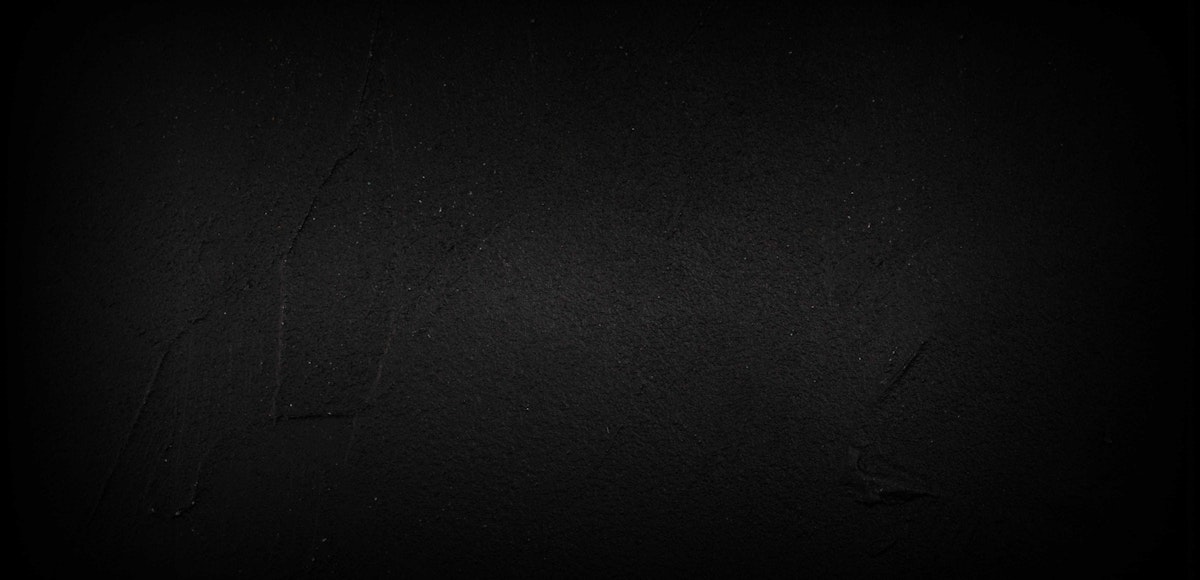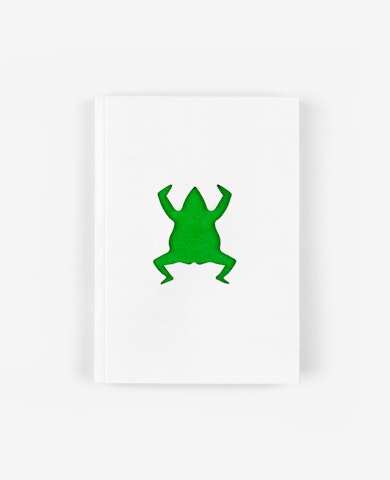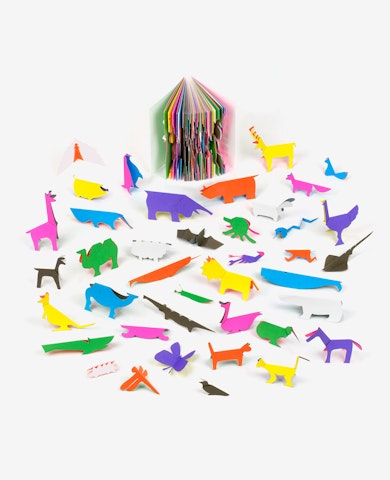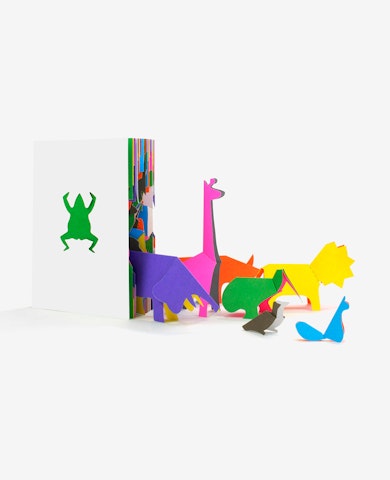
Telling stories differently Alexandre Chaize’s Éditions du livre
Alexandre, the editorial line of the Éditions du livre is very cheerful but also very radical. You have created a surprising universe!
The Éditions du Livre was built in several stages. I first discovered the publishing world through the fanzine enthusiasts and micro publishing fairs, with my partner Frédérique Rusch. We started out making small editions, about a hundred copies each time, either printed at home or printed at a printer’s but bound at home, by hand. It revolved a lot around illustration, but then one day I had a light bulb moment. I was naturally drawn to Bruno Munari’s books and decided to experiment. What would it look like if a page were transparent, if it were folded, if it were made to be cut out or perforated?
And you have always done this with a young audience in mind.
With books intended for children of 7 years and older, there are issues with narration, comprehension, and storyline to manage. A children’s book for toddlers is very different and allows for a lot more experimentation. When our daughter was very young, it suddenly dawned upon me that the subject of a book could simply be a sequence of colours, folds, contrasts or very simple shapes. Somehow along the way I had forgotten this. But in fact it only takes a few colours and a simple geometric shape to create a new world and a child understands immediately what it’s all about.
Making books like Zoo in my Hand, for them to be cut up, is crazy, isn’t it?
There is the adult point of view and the child’s point of view. For adults, there is a kind of respect for the object and also the ability to appreciate the potential of the book without cutting it up. While a child will want to check with his hands what it is. The completely straightforward reaction of a child to the book is what I prefer!
What does it mean to you not only to exhibit your books but also to give them new dimensions in an exhibition?
The books I publish have a strong materiality and lend themselves well to be developed in space. People can enter a book by holding it in their hands, but by playing with the changes of scale and size, you can really overwhelm visitors with colours and shapes! I was able to implement this at Le Signe (Centre National du Graphisme), and since then I’ve been considering this aspect in a new project too.
Over the years, I have been rather radical in the way I’ve worked, doing a kind experimental plastic research. What I try to do as a publisher is to achieve my ideal image: playful, colourful, minimal and geometric. It’s through the work of artists, including in exhibitions, that I manage to create that aesthetic world.







